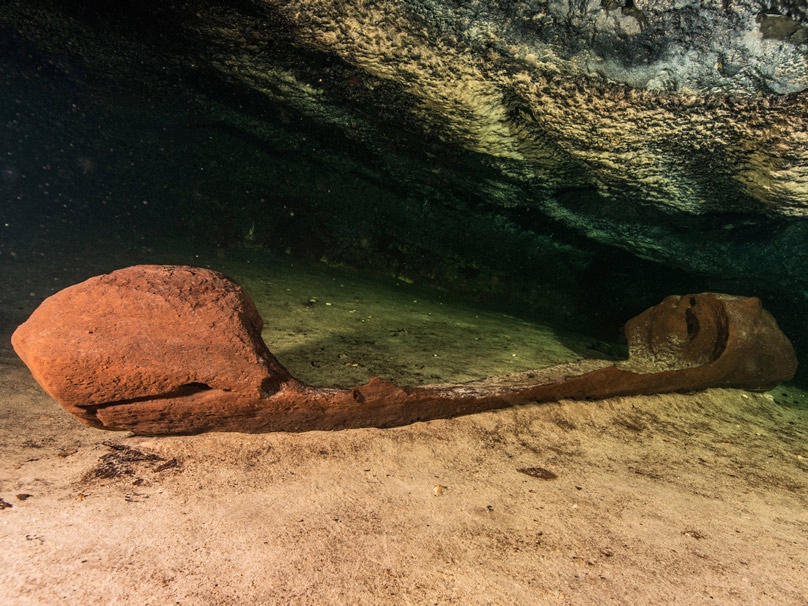Maya Canoe Found in Underwater Cave May Have Been Used for Rituals
Archaeologists discovered the seven-foot-long vessel near Chichén Itzá two years ago
Sonja Anderson
Reporter
July 6, 2023 3:52 p.m.

The canoe was discovered in an underwater cave in 2021. National Institute of Anthropology and History
A well-preserved Maya canoe found in a Mexican freshwater cave may have been placed there as part of a ritual marking an entrance to the underworld, researchers announced in a statement from Mexico’s National Institute of Anthropology and History (INAH).
Divers discovered the canoe in 2021 near Chichén Itzá, an ancient Maya city in Mexico’s Yucatán Peninsula, as Livia Gershon reported for Smithsonian magazine. The vessel was located 15 feet below the surface of a sinkhole filled with fresh water, also known as a cenote. Per Reuters’ David Alire Garcia, it was the first intact canoe found in the Maya region. Researchers have been examining it onsite since then.
As the only sources of freshwater in Mexico’s Yucatán state, cenotes were both life-sustaining and spiritually significant for the Maya. “The Maya conceived of the cosmos as having three basic layers: heavens, earth and underworld,” underwater archaeologist Guillermo de Anda told CNN’s Mark Tutton in 2018. “Cenotes were the entrance to the underworld.” To appease deities, like the rain god Chac, the Maya people threw offerings—sometimes human sacrifices—into the cenotes.
While investigating the cenote harboring the canoe, researchers also found 38 skeletal remains from several animals—including a dog, eagle, turkey and armadillo—as well as a woman’s foot bone. The researchers say the armadillo bones and human foot bone helped clue them into the canoe’s probable ritualistic purposes.
“The remains of the armadillo, whose swimming ability allows it to hold its breath and cross bodies of water holding its claws to the ground, would be an allusion to the entry of said animal into the underworld,” says INAH in the statement, per Google Translate. And as Newsweek’s Jess Thomson writes, the Maya also considered the armadillo an avatar of God L, their deity of the underworld.
More:
https://www.smithsonianmag.com/smart-news/maya-canoe-mexico-180982485/
